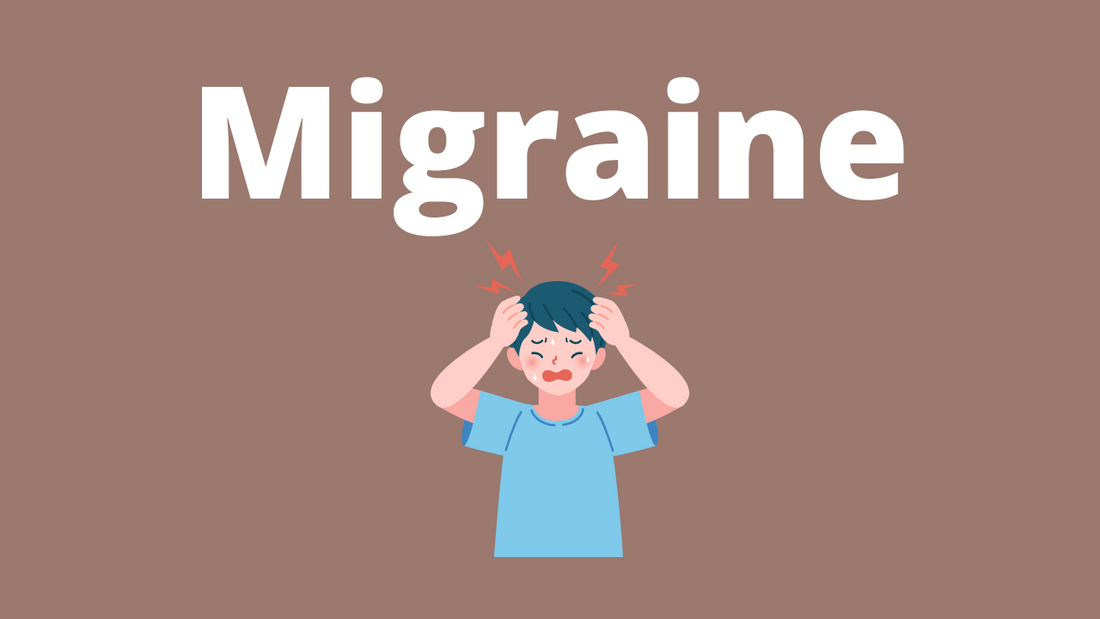What is migraine?
Migraine is a very common primary headache disorder, characterized by throbbing or pulsating, moderate to severe headache that often occurs on one side of the head. It is episodic, meaning that it comes and goes in the form of separate attacks. And in most cases, the person also suffers from nausea, vomiting and/or sensitivity to light, sound or smell.
Migraines can come with, or without aura. Around one-third of people with migraine experience aura. Aura can be in the form of visuals (seeing zig zag lines, blind spots or flashes of light…), feeling numbness or tingling in the arms and legs, muscle weakness, or speech and language difficulty.
Most people only have a few attacks per month. But a small number of migraine sufferers have chronic migraine, which is defined as having at least 15 headache days a month, with at least 8 days of having migraine headaches, for a total of more than 3 months. Chronic migraine is the most disabling form of migraine that greatly impacts quality of life, with many people having chronic migraine are more likely to be unemployed, with relationship and family problems. And this also means higher risk of depression, insomnia and other health problems.
How migraine is diagnosed?
There's no single test to determine if someone has a migraine or not. Instead, doctors will rely on information provided by the patient about their symptoms and previous history of attacks.
Migraine is not the same as many other types of headache. Therefore, if you think you are experiencing migraines, you should go visit your doctor as soon as possible for a diagnosis.
Other facts about migraine
Migraine is one of the top 10 most disabling diseases on Earth, according to the World Health Organization.
Migraine is 3 times more common in women than men.
Children can have migraines too. It is estimated that 10% of children experienced migraine. If the parents have migraines, then the children are at a greater risk of having it.
How migraine is treated?
Some people say that going into a dark, quiet room can help lessen the symptoms of migraine.
In terms of medication, there is no cure. However, some drugs can be used to manage symptoms, such as pain relievers and anti-inflammatory drugs. Some blood pressure, antidepressants or anti seizures drugs can be used to prevent and reduce the frequency of attacks.
Because there are so many types of drugs that can be used in combination, there is a risk of unwanted drug interaction. Therefore, it is recommended to consult a doctor who can check for said interactions and tell you what are the most appropriate dosages of the drugs to use.
Cannabis and migraine
Given the unfavorable side effects of current migraine treatments, medical cannabis has been proposed as an alternate treatment for migraines.
In May 2022, a review was published in Frontiers in Neurology, regarding the use of medical cannabis for migraines. It reviewed 12 publications, which involved a total of 1,980 participants in Italy and the United States. The result showed that cannabis can reduce both symptoms and the frequency of migraine attacks. And not only that, nausea and vomiting associated with migraine attacks is also significantly reduced.
Furthermore, migraine, along with fibromyalgia and irritable bowel syndrome are illnesses that can be caused by clinical endocannabinoid deficiency syndrome (CECD). It is hypothesized that an underperformed endocannabinoid system can lead to imbalances in the systems of the body, thus causing migraines. Therefore, supplementing the body with phytocannabinoids, like THC and CBD may help.
How to use Cannabinoids for Migraines?
Both THC and CBD can be used. Always start from the small dose of about 5-10mg CBD on the first day, then gradually increase the dose every two days by 5mg until you find the right dose that gives the desired effect. Since each person responds differently to cannabinoids, it is best to experiment with different delivery systems while gradually and slowly increasing the dose to find the best way of administration and the most optimal dosage.
In a questionnaire published in 2018 in the Journal of Headache and Pain, researchers found out that headache and migraine patients often prefer hybrid cannabis strains, with high β-caryophyllene and β-myrcene contents.
Bibliography
Ahmed, F. (2012). Headache disorders: Differentiating and managing the common subtypes. British Journal of Pain, 6(3), 124–132. https://doi.org/10.1177/2049463712459691
Baron, E. P., Lucas, P., Eades, J., & Hogue, O. (2018). Patterns of medicinal cannabis use, strain analysis, and substitution effect among patients with migraine, headache, arthritis, and chronic pain in a medicinal cannabis cohort. The Journal of Headache and Pain, 19(1), 37. https://doi.org/10.1186/s10194-018-0862-2
Cannabinoids suitable for migraine prevention. (n.d.). European Pharmaceutical Review. Retrieved November 10, 2022, from https://www.europeanpharmaceuticalreview.com/news/62784/cannabinoids-suitable-migraine-prevention/
Greco, R., Demartini, C., Zanaboni, A. M., Piomelli, D., & Tassorelli, C. (2018). Endocannabinoid System and Migraine Pain: An Update. Frontiers in Neuroscience, 12, 172. https://doi.org/10.3389/fnins.2018.00172
Greco, R., Gasperi, V., Maccarrone, M., & Tassorelli, C. (2010). The endocannabinoid system and migraine. Experimental Neurology, 224(1), 85–91. https://doi.org/10.1016/j.expneurol.2010.03.029
Migraine. (2017, October 23). Nhs.Uk. https://www.nhs.uk/conditions/migraine/
Okusanya, B. O., Lott, B. E., Ehiri, J., McClelland, J., & Rosales, C. (2022). Medical Cannabis for the Treatment of Migraine in Adults: A Review of the Evidence. Frontiers in Neurology, 13. https://www.frontiersin.org/articles/10.3389/fneur.2022.871187
Poudel, S., Quinonez, J., Choudhari, J., Au, Z. T., Paesani, S., Thiess, A. K., Ruxmohan, S., Hosameddin, M., Ferrer, G. F., & Michel, J. (n.d.). Medical Cannabis, Headaches, and Migraines: A Review of the Current Literature. Cureus, 13(8), e17407. https://doi.org/10.7759/cureus.17407
Russo, E. B. (2016). Clinical Endocannabinoid Deficiency Reconsidered: Current Research Supports the Theory in Migraine, Fibromyalgia, Irritable Bowel, and Other Treatment-Resistant Syndromes. Cannabis and Cannabinoid Research, 1(1), 154–165. https://doi.org/10.1089/can.2016.0009

